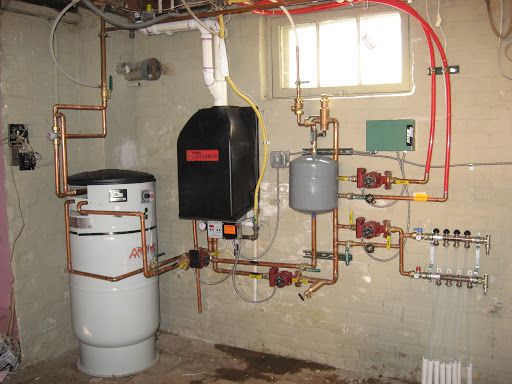How do you feel on the subject of What Kind of Maintenance Do Water Heaters Need??

Warm water is essential for everyday convenience, whether it's for a refreshing shower or washing recipes. To ensure your hot water system runs successfully and lasts longer, routine maintenance is vital. This article supplies useful suggestions and insights on just how to maintain your home's warm water system to prevent disruptions and pricey repair work.
Introduction
Preserving your home's warm water system may appear daunting, however with a couple of basic actions, you can guarantee it operates smoothly for many years ahead. This overview covers everything from recognizing your hot water system to DIY maintenance ideas and recognizing when to call in expert assistance.
Value of Preserving Your Warm Water System
Routine upkeep not just expands the lifespan of your hot water system but also ensures it operates effectively. Ignoring upkeep can bring about lowered performance, greater power expenses, and also early failing of the system.
Indicators Your Warm Water System Demands Maintenance
Knowing when your hot water system needs attention can prevent major issues. Look out for indicators such as inconsistent water temperature, strange noises from the heater, or corroded water.
Purging the Hot Water Heater
Purging your hot water heater gets rid of debris accumulation, enhancing effectiveness and prolonging its life.
Checking and Changing Anode Rods
Anode poles protect against deterioration inside the container. Checking and replacing them when worn out is essential.
Complex Issues Requiring Specialist Assistance
Examples include significant leakages, electrical issues, or if your water heater is continually underperforming.
Regular Expert Maintenance Benefits
Specialist maintenance can include comprehensive inspections, tune-ups, and making certain conformity with security standards.
Evaluating and Changing Temperature Settings
Changing the temperature level settings ensures ideal performance and safety and security.
DIY Tips for Maintenance
You can execute several maintenance jobs on your own to keep your hot water system in top problem.
Looking for Leakages
Regularly inspect pipes and links for leakages, as these can result in water damage and greater costs.
Recognizing Your Warm Water System
Prior to diving into maintenance tasks, it's practical to recognize the basic parts of your warm water system. Usually, this includes the hot water heater itself, pipelines, anode rods, and temperature level controls.
Monthly Maintenance Tasks
Routine month-to-month checks can help catch minor concerns before they escalate.
Testing Stress Alleviation Valves
Evaluating the stress safety valve guarantees it operates appropriately and prevents excessive pressure buildup.
Shielding Pipelines
Insulating hot water pipes minimizes warmth loss and can save power.
When to Call a Professional
While do it yourself maintenance is beneficial, some issues need professional expertise.
Verdict
Routine maintenance of your home's warm water system is essential for effectiveness, durability, and price financial savings. By complying with these pointers and understanding when to seek professional assistance, you can guarantee a trustworthy supply of hot water without unexpected disruptions.
How to Maintain an Instant Hot Water Heater
Before tinkering with your hot water heater, make sure that it’s not powered on. You also have to turn off the main circuit breaker and shut off the main gas line to prevent accidents. Also turn off the water valves connected to your unit to prevent water from flowing into and out of the appliance. 2. When you’re done, you have to detach the purge valves’ caps. These look like the letter “T†and are situated on either side of the water valves. Doing so will release any pressure that has accumulated inside the valves while at the same time avoid hot water from shooting out and burning your skin. 3. When the purge valves’ caps are removed, you have to connect your hosing lines to the valves. Your unit should have come with three hoses but if it didn’t, you can purchase these things from any hardware or home repair shops. You can also get them from retail stores that sell water heating systems. Read the user’s manual and follow it to complete this task properly. When the hosing lines are connected, open the purge port’s valves. 4. You should never use harsh chemical cleaners or solutions when cleaning your unit. Make use of white vinegar instead. It should be undiluted and you’ll probably use about 2 gallons. 5. Now flush your water heater. This task should probably take about 40 minutes. We can’t give you specific directions for this because the procedure is carried out depending on the type, model and brand of your heater. With that being said, refer to the user’s manual. 6. When you’re done draining the unit, you have to turn off the purge port valves again. Remove the hosing lines that you earlier installed on each of the water valves. Put the valve caps (purge port) back in their respective places and be very careful so as not to damage the rubber discs that are found inside these caps. 7. Now that everything’s back in place, check your user’s manual again to find out how to reactivate your water heating system. 8. Once it is working, turn one of your hot water faucets on just to let air pass through the heater’s water supply pipes. Leave the tap on until water flows smoothly out of it. https://www.orrplumbing.com/blog/2014/september/how-to-maintain-an-instant-hot-water-heater/

I am very intrigued by Tips For Maintaining Your Hot Water Heater and I really hope you liked my blog entry. Don't hesitate to pause to promote this blog entry if you liked it. Thanks for going through it.
Schedule And Pricing